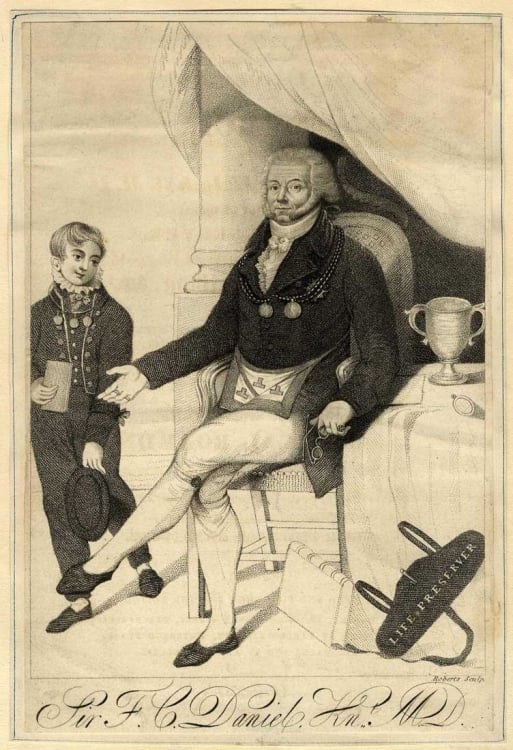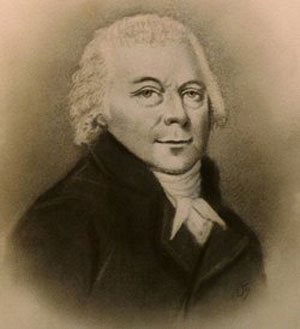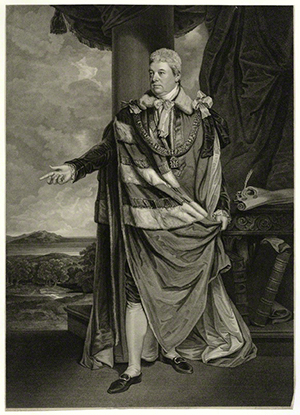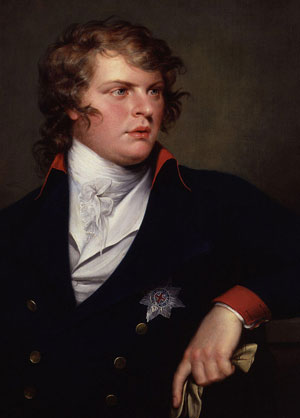| King George IV | |||
| Useful Links |
The Union of the first two Grand Lodges
IT IS MORE THAN 200-YEARS SINCE THE UNION OF THE FIRST TWO MASONIC GRAND LODGES. MASONIC HISTORIAN, JOHN HAMILL, EXPLORES THE PEOPLE, THE PLANNING, AND THE IRISH CONNECTION BEHIND THE CREATION OF THE UNITED GRAND LODGE OF ENGLAND.
The formation of the Antients Grand Lodge in 1751 – instigated mainly by Irish brethren in London who had been estranged and unable to gain entry to lodges under the Premier Grand Lodge – marked the start of an era in which two rival Grand Lodges existed in juxtaposition and during the same time period. Initially there was great enmity between the two, and both sides threatened dire consequences against any members who became involved with their rival. But as time went on, except at the centre, relations relaxed, particularly in the Provinces where the beady eyes of the respective Grand Secretaries did not extend. That said though, even in London, a number of prominent brethren had a foot in both camps.
Indeed, it was because of two such brethren that the first serious attempt, in 1801, to start negotiations towards a union foundered. When it was announced that talks might begin, there were groups within both Grand Lodges who did not wish to start any negotiation and sought to undermine any talks before they began. Charges were brought in the Antients’ Grand Lodge against Francis Columbine Daniel for being active in both Grand Lodges, that resulted in his expulsion. Daniel was a doctor and apothecary, best remembered today as having invented the inflatable life vest for sailors and for receiving an ‘accidental knighthood’. Daniel believed that the new Deputy Grand Master of the Antients, Thomas Harper, had engineered his expulsion and sought revenge.
ROOTED IN RIVALRY
Harper had been very active in both Grand Lodges, being a Grand Steward in the premier Grand
Lodge in 1796 when he was also Deputy Grand Secretary of the Antients. He was a goldsmith,
jeweller and printer, making Masonic jewels that are now highly prized and collected. Quite how
someone so prominent had got away with being so publicly active in both Grand Lodges is the
subject of another article, but Daniel forced the premier Grand lodge to recognise the fact and
they expelled Harper in 1803, bringing any talk of a union to a halt.
In 1806, the Prince of Wales (later King George IV - see Famous Freemasons A to M elsewhere
on this site), Grand Master of the premier Grand Lodge since 1791, was elected Grand Master
Mason of the Grand Lodge of Scotland. As he had done in England, he appointed the Earl
of Moira as his Acting Grand Master. Moira seems to have seen the Prince’s election as an
opportunity to bring the premier Grand Lodge and Scotland closer together. The Scots, however,
saw the election as simply allowing for a closer relationship between the two Grand Lodges,
rather than an actual joining together.
Nevertheless, talk of union seems to have turned the minds of the Prince and Moira to the
situation in England. In 1809 they approached the Antients with the idea of setting up a joint
committee to explore a possible ‘equable union’. A stumbling block was the fact that Harper
was still Deputy Grand Master of the Antients and was very much in charge during the extended
absences of the Grand Master John Murray, 4th Duke of Atholl. Nevertheless, the negotiators
were appointed and in 1810 Harper was welcomed back into the Premier Grand Lodge.
Apart from the formal Grand Lodge Minutes and odd bits of correspondence, little evidence survives about regarding the negotiations, that dragged on for nearly four years. Part of the problem was that while the Premier Grand Lodge team had been given authority to make decisions, those representing the Antients had to have any decisions agreed within a quarterly meeting of their Grand Lodge.
A GREAT RIVALRY
Matters were not helped by the fact that the Antients’ Grand Secretary, Robert Leslie, was firmly
against the project. A somewhat prickly character, he had been Grand Secretary since 1790
and, unlike his counterparts in the Premier Grand Lodge, was a salaried official, earning £100 a
year. Indeed, so much was he against the union that even when it was accomplished he refused
to hand over the records of the Antients’ Grand Lodge.
Proceedings might have ground to a halt in 1813 had it not been for major changes at the head of both Grand Lodges. The Prince of Wales resigned as Grand Master and was succeeded by his younger brother the Duke of Sussex. In November 1813 the Duke of Atholl resigned as Grand Master of the Antients, who elected another royal brother, the Duke of Kent, as their Grand Master.
It says a great deal about the authority of Princes in those days that within six weeks they had knocked heads together, and agreed and drawn up ‘Articles of Union’. They also planned the great ceremony, which took place at Freemasons’ Hall on 27 December 1813, when the union was declared and the Duke of Sussex was installed as Grand Master of the United Grand Lodge of England.
In December 2013 the U.G.L.E. held an event to celebrate one of the greatest events recorded in the annals of Freemasonry, the bicentenary of the union of the Grand Lodges of the ‘Moderns’ and the ‘Antients’ that so changed the face of modern Masonry around the world.
Author John Hamill is the Head of Special Projects at the United Grand Lodge of England, London, United Kingdom.
Useful Links
Provincial Grand Lodge of New Zealand,
Irish Constitution:
www.ara348ic.org.nz
The Grand Lodge of Ireland, Dublin, Eire: www.freemason.ie
Freemasonry Today magazine: www.freemasonrytoday.com





